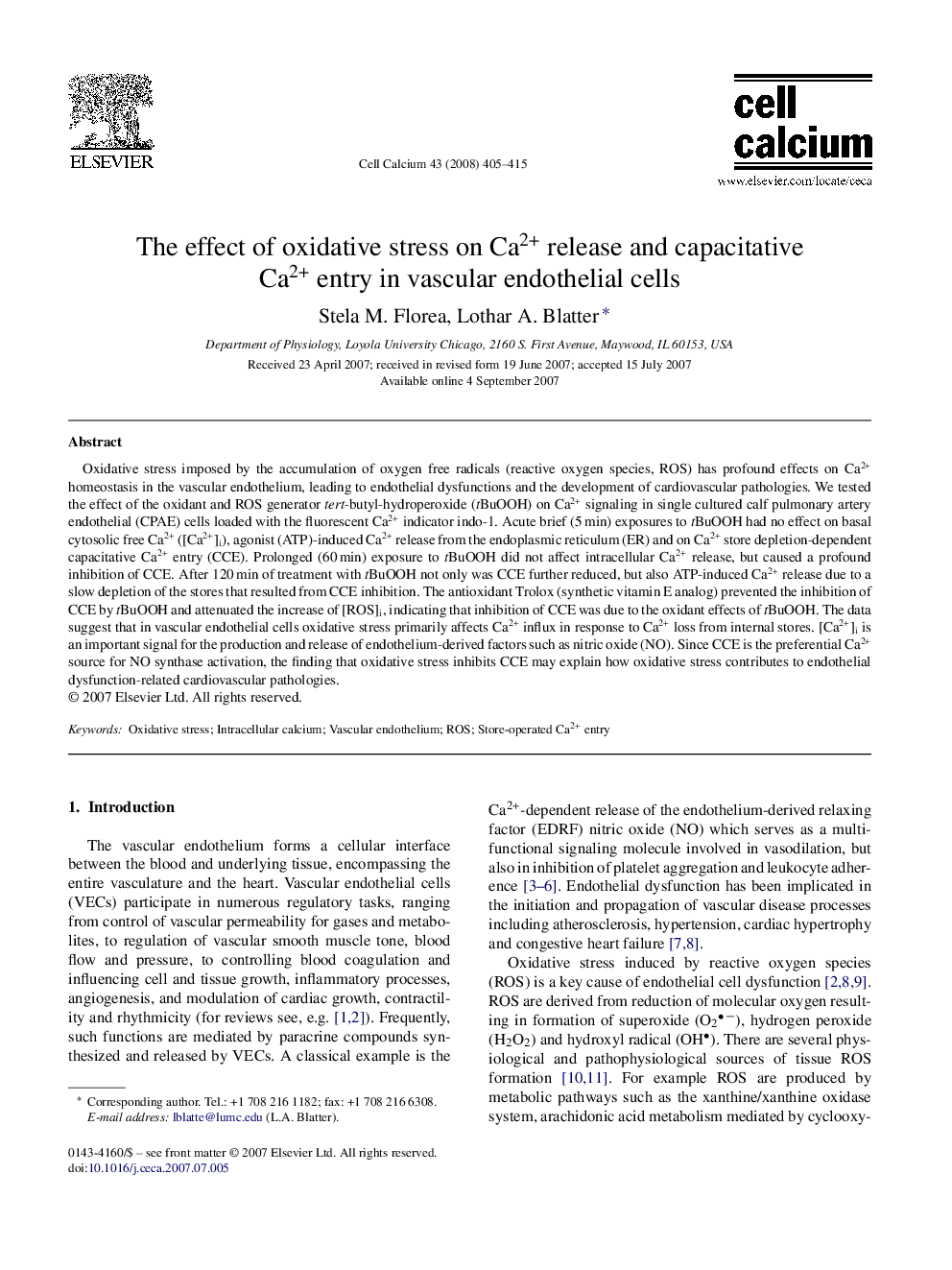| Article ID | Journal | Published Year | Pages | File Type |
|---|---|---|---|---|
| 2166674 | Cell Calcium | 2008 | 11 Pages |
Oxidative stress imposed by the accumulation of oxygen free radicals (reactive oxygen species, ROS) has profound effects on Ca2+ homeostasis in the vascular endothelium, leading to endothelial dysfunctions and the development of cardiovascular pathologies. We tested the effect of the oxidant and ROS generator tert-butyl-hydroperoxide (tBuOOH) on Ca2+ signaling in single cultured calf pulmonary artery endothelial (CPAE) cells loaded with the fluorescent Ca2+ indicator indo-1. Acute brief (5 min) exposures to tBuOOH had no effect on basal cytosolic free Ca2+ ([Ca2+]i), agonist (ATP)-induced Ca2+ release from the endoplasmic reticulum (ER) and on Ca2+ store depletion-dependent capacitative Ca2+ entry (CCE). Prolonged (60 min) exposure to tBuOOH did not affect intracellular Ca2+ release, but caused a profound inhibition of CCE. After 120 min of treatment with tBuOOH not only was CCE further reduced, but also ATP-induced Ca2+ release due to a slow depletion of the stores that resulted from CCE inhibition. The antioxidant Trolox (synthetic vitamin E analog) prevented the inhibition of CCE by tBuOOH and attenuated the increase of [ROS]i, indicating that inhibition of CCE was due to the oxidant effects of tBuOOH. The data suggest that in vascular endothelial cells oxidative stress primarily affects Ca2+ influx in response to Ca2+ loss from internal stores. [Ca2+]i is an important signal for the production and release of endothelium-derived factors such as nitric oxide (NO). Since CCE is the preferential Ca2+ source for NO synthase activation, the finding that oxidative stress inhibits CCE may explain how oxidative stress contributes to endothelial dysfunction-related cardiovascular pathologies.
